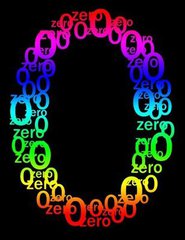Scientists from Oxford University in England have discovered that the written use of the zero is 500 years older than previously thought. The scientists used carbon dating to trace the symbol's origins to a famous ancient Indian scroll called the Bakhshali Manuscript. Scientists found the scroll dates back to the third century, which makes it the oldest script using the symbol. Before the carbon dating of the scroll, scientists believed the manuscript was created in the eighth century. It was found in the village of Bakhshali in 1881. The zero symbol that we use today evolved from a round dot frequently used in India. This symbol can be seen several times on the manuscript.

Marcus Du Santoy, a mathematics professor at Oxford University, explained the significance of the zero in our lives. He told Britain's 'Guardian' newspaper that: "Today, we take it for granted that the concept of zero is used across the globe and is a key building block of the digital world. But the creation of zero as a number in its own right, which evolved from the placeholder dot symbol found in the Bakhshali manuscript, was one of the greatest breakthroughs in the history of mathematics." Zero has many names in English, including nought, nil (in football) and love (in tennis). It is often said as "oh" in the context of telephone numbers. Informal or slang terms for zero include nowt, nada, zilch and zip.
译文由可可原创,仅供学习交流使用,未经许可请勿转载。












